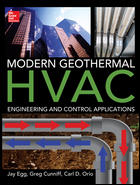Major revisions for design and measurement of comfortable spaces have been included in a newly published 2013 standard from ASHRAE.
ANSI/ASHRAE Standard 55-2013, Thermal Environmental Conditions for Human Occupancy, combines the 2010 standard and 18 published addenda into a consolidated standard. The core of the standard in Sections 4 and 5 specifies methods to determine thermal environmental conditions (temperature, humidity, air speed, and radiant effects) in buildings and other spaces that a significant proportion of the occupants will find acceptable at a certain metabolic rate and clothing level.
Section 7 of the standard includes new requirements for the measurement and evaluation of existing thermal environments and is also applicable to commissioning.
The standard has been re-written with a renewed focus on application by practitioners and use of clear, enforceable language. ASHRAE officials said the requirements are now clearly stated and calculation procedures appear sequentially.
Other noteworthy additions to the standard include an allowance for the cooling effect of air movement as a way to extend the upper limit of the comfort zone in naturally conditioned spaces and addition of a predictive model for occupant clothing behavior based on extensive field research. These additions provide new methods for improving occupant comfort while minimizing energy use, according to Gwelen Paliaga, chair of the committee that wrote the standard.
For more information or to order a copy of the standard, visit www.ashrae.org/bookstore.







